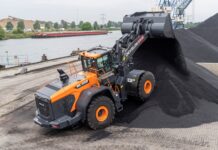Almost half (45 per cent) of furloughed construction workers are anxious about their return to work, according to recruiter Randstad.
A poll of almost 1,400 construction workers from across the UK highlighted the relationship between post-furlough anxiety and the failure to offer best practice HR . Only 18 1 per cent of those who had returned and classified their onboarding experience as “very good” were anxious.
In contrast, of those construction workers who had either no onboarding or an experience they regarded as either “poor” or “very poor”, 92 per cent were anxious on their return to work.

“It might be arduous for some teams who are spread pretty thin at the moment but while standard onboarding might be expected to last for a couple of weeks to be effective, post-furlough onboarding is much shorter. Done properly, it will help employees feel more confident and competent when they get back on the job. It’s about investing the time to protect well-being and to ensure a productive returning workforce.”
Industry Breakdown
Some industries are diligently onboarding furloughed staff returning to work – while others have failed to embrace it. While a third of furloughed employees (34 per cent) receive either no (or very poor) onboarding on their return to work, this rose to 38 per cent of employees in Construction.
Manufacturing was better (27 per cent) as was Rail – where only 17 per cent said they had no or very poor on boarding.
Adrian Smith said: “It’s worrying that such a high proportion of employees in sectors like construction aren’t getting the onboarding attention they deserve. Once construction rejoiced in a reputation for being quite old-fashioned. But I thought we’d kicked the days of sub-standard HR in the industry into the long grass.”
Equally, only 36 per cent of those construction workers who had weekly check-ins with their organisations said they were nervous about returning to work, compared 46 per cent who have bimonthly check-ins or 67 per cent who had no check-ins at all.
Adrian Smith said: “The more that staff communicate, the better they work together – accomplishing goals, developing skills, and giving and receiving feedback. While furlough has changed the purpose of the check-in somewhat, the importance of keeping the lines of communication open remains.

















